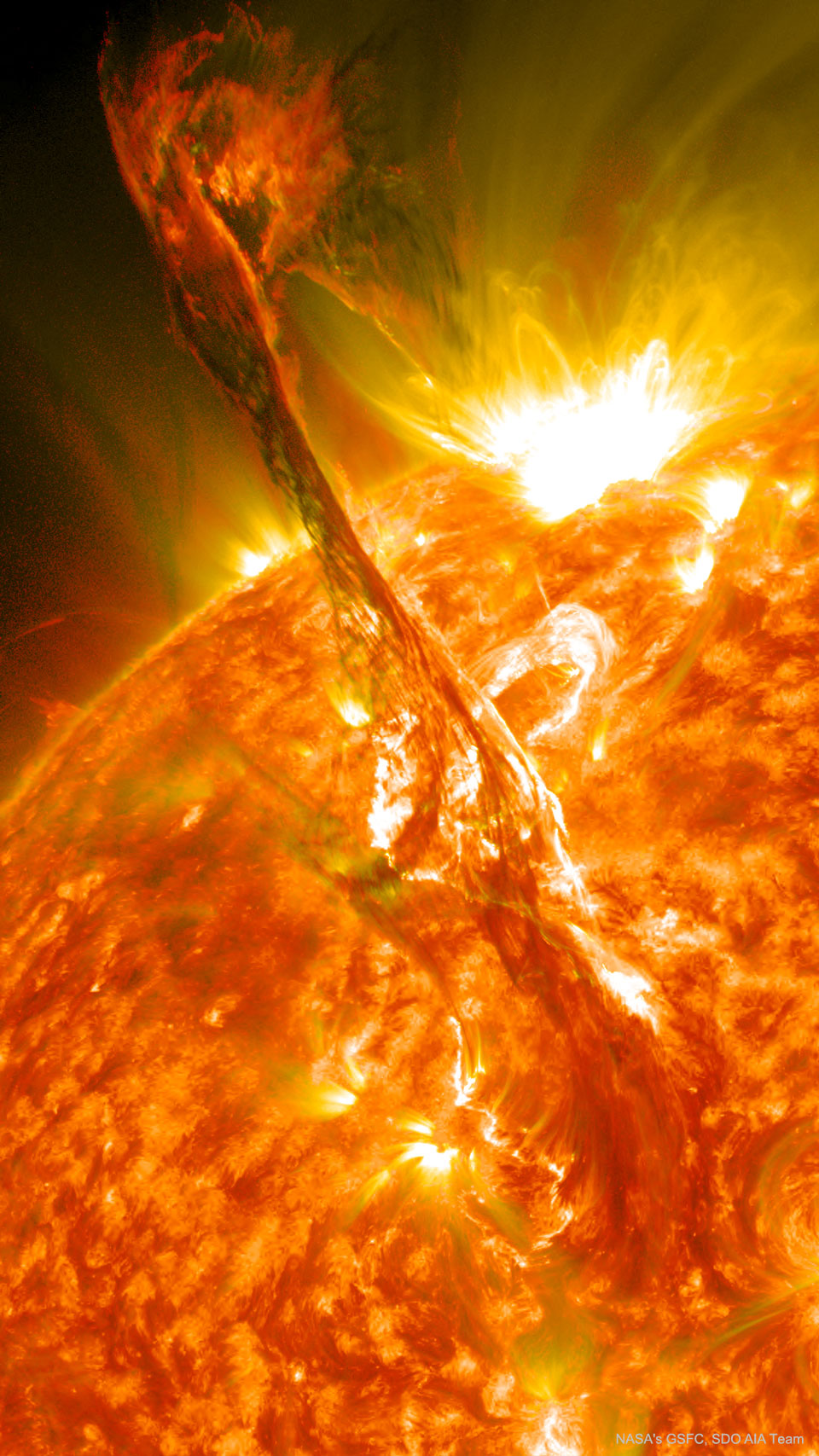
2018年9月30日 星期日
The First Rocket Launch from Cape Canaveral

2018年9月29日 星期六
The Lonely Neutron Star in Supernova E0102 72.3
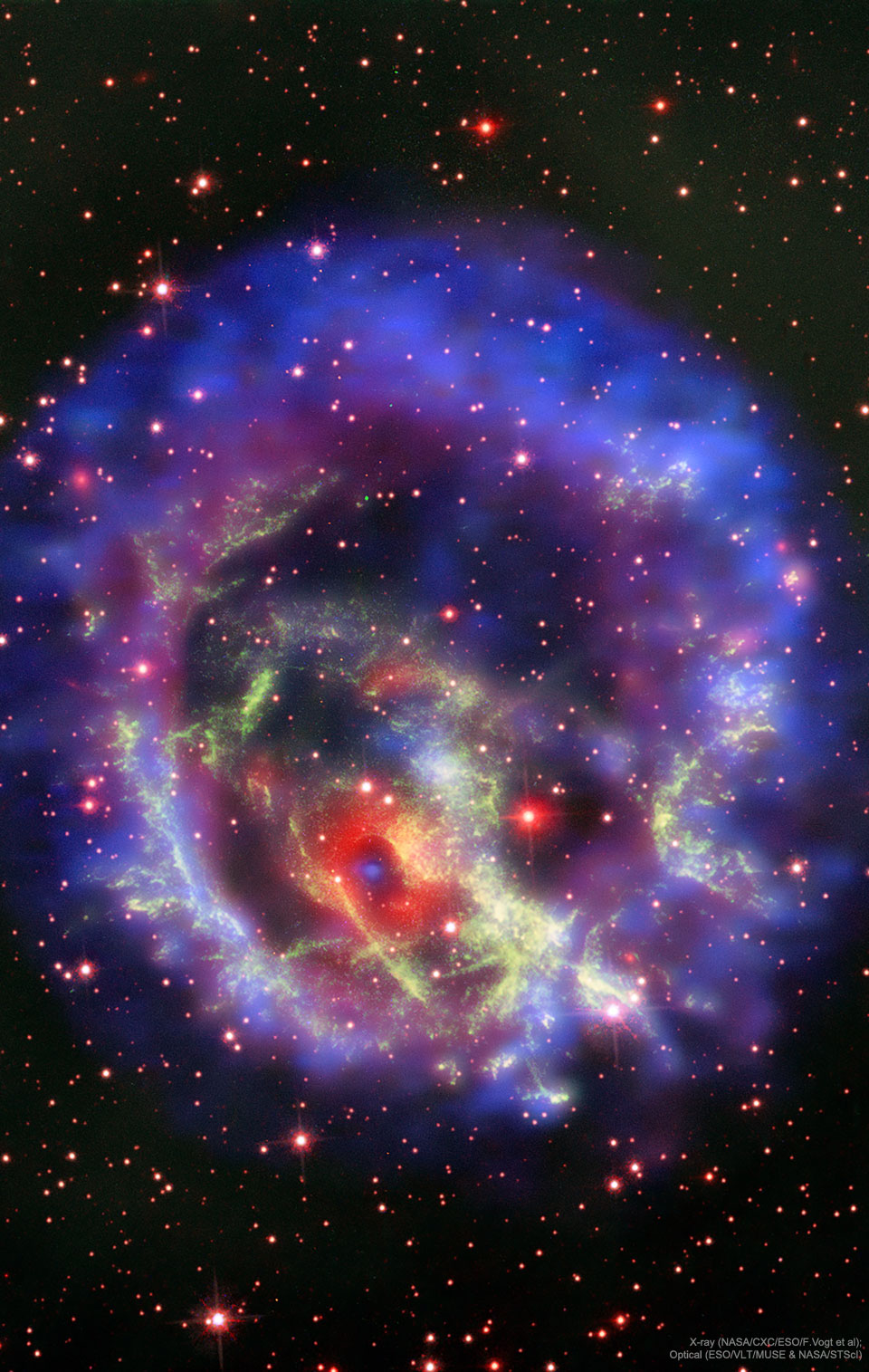
2018年9月28日 星期五
55 Nights with Saturn
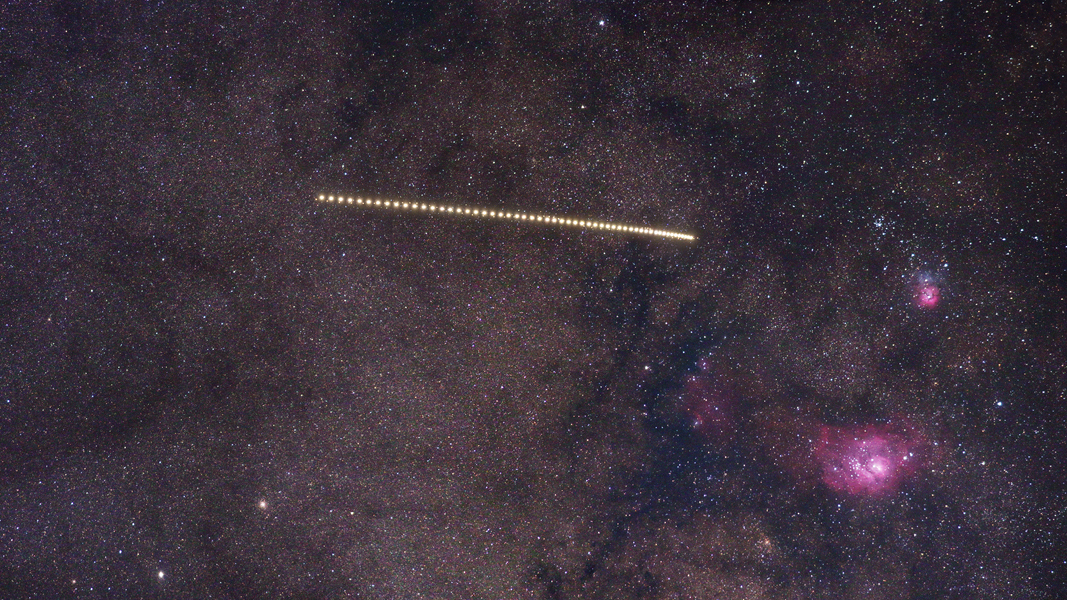
Apollo 7 Crew Trains to Test Technology for Missions to the Moon

NASA to Air Administrator’s Message Marking Agency 60th Anniversary
September 28, 2018
from NASA https://ift.tt/2NL5v7w
via IFTTT
‘Year of Education on Station’ Wraps up with Live Earth-to-Space Call Between Students, NASA Astronaut in Orbit
September 28, 2018
from NASA https://ift.tt/2N4V4GI
via IFTTT
ISS Daily Summary Report – 9/27/2018
September 28, 2018 at 12:00AM
from NASA https://ift.tt/2N8fo9X
via IFTTT
2018年9月27日 星期四
The Light, the Dark, and the Dusty
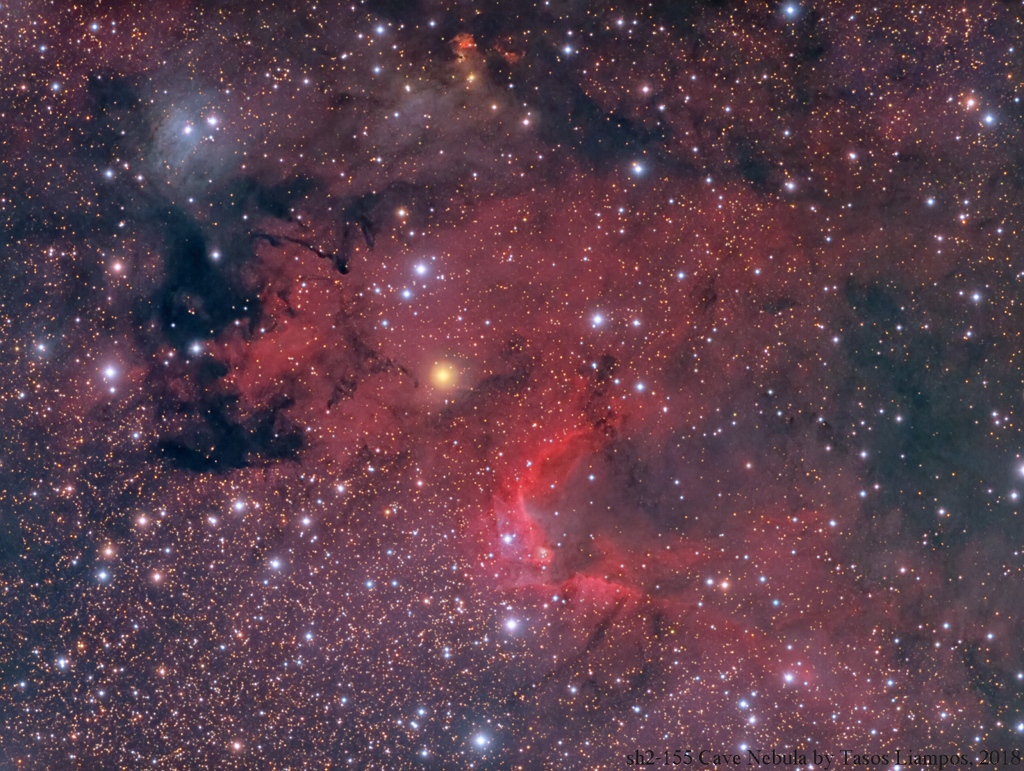
Astronaut Michael Lopez-Alegria Works on Constructing the International Space Station

NASA Awards Contract for Archive Center Operations
September 27, 2018
from NASA https://ift.tt/2xHGTSX
via IFTTT
NASA Awards Contract for Custodial Services
September 27, 2018
from NASA https://ift.tt/2NL0trC
via IFTTT
NASA Awards Contract for Climate Pathfinder Mission Instrument
September 27, 2018
from NASA https://ift.tt/2xJemwr
via IFTTT
NASA TV to Air Live Coverage of International Space Station Crew Landing
September 27, 2018
from NASA https://ift.tt/2NKDX24
via IFTTT
ISS Daily Summary Report – 9/26/2018
September 27, 2018 at 12:00AM
from NASA https://ift.tt/2OfTBC1
via IFTTT
Two Hearings Point To A Fading NASA
Keith's note: A hearing by the House Committee on Science, Space, and Technology yesterday competed with another hearing being held simultaneously by the Senate Commerce Committee. Not much happened in the House hearing other than the usual routine posturing by both sides. The main topic of discussion was the future of the ISS. Bill Gertsenmaier repeated the same incomplete jingos used concocted by NASA to describe how NASA somehow expects the ISS to be paid for by the private sector in the 2024/2025 time frame. Gertsenmaier referred to the NASA ISS Transition Plan (not really a "Plan") required by law, but was delivered months late to Congress. The three NASA Center directors present to testify said nothing particularly interesting.
Rep. Babin announced that he's introducing H.R.6910 "To specify goals and objectives of the United States with respect to human spaceflight, and for other purposes." This bill includes language that would extend the life of the International Space Station to 2030. Similar language on ISS extension was included in S.3277 - Space Frontier Act of 2018 which was passed out of the Senate Commerce Committee in August. The topic of ISS extensions was a conversation between Jim Bridenstine and Ted Cruz in the other hearing held yesterday.
- Hearing charter
- Video recording of hearing
- [Statement] Full Committee Chairman Lamar Smith (R-Texas)
- [Statement] Space Subcommittee Chairman Brian Babin (R-Texas)
- [Statement] Ranking Member Johnson
- [Statement] Ranking Member Bera
- [Statement] William Gerstenmaier, HEOMD Associate Administrator
- [No prepared statement] Mark Geyer, JSC; Jody Singer, MSFC; Robert Cabana, KSC
In the Senate NASA Administrator Bridenstine Testified before the Senate Commerce Committee Subcommittee on Space, Science, and Competitiveness, In reality Bridenstine testified before Sen. Ted Cruz (R-TX) and Sen. Ed Markey (D-MA). Bill Nelson did a flyby appearance and no one else really stayed long enough to say much of anything. Cruz pushed on the issue of not being distracted by the Moon as we head for Mars, not abandoning the ISS, allowing NASA to derive financial benefit from better ISS commercialization and use of its logo, and making sure that the U.S. remains the global leader in space exploration. Bridenstine agreed with Cruz on everything - and was intrigued by Cruz' s comments on space commerce. Sen. Markey was all over NASA's Earth and Space Science plans and the fate of NASA's Education Office and Technology Directorate to which Bridenstine gave the stock NASA answers.
At one point Cruz referred to the NASA report "National Space Exploration Campaign Report - Pursuant to Section 432(b) of the NASA Transition Authorization Act of 2017 (P.L. 115-10), September 2018," which was required by law and due for delivery in 2017 which NASA delivered late (just like the ISS Transition Report). Cruz asked Bridenstine about the report's stated intent of putting humans back ont he Moon by 2029 and asked why it only took 7 years to go from statement of intent to landing on the Moon in the 1960s and why does it take so much longer now? Bridenstine said that this was the first question he asked when he arrived at NASA. His answer: NASA is going back in a sustainable fashion - to stay - and is doing so with partners in a more constrained fiscal environment. OK. That works for the time being - he's new to the job. But additional digging on his part is going to show that there is more to this than the talking points that he's been given.
- Webcast
- Global Space Race: Ensuring the United States Remains the Leader in Space Bill Nelson Opening Statement
- Prepared statements by Jim Bridenstine, Sen. Cruz, and Sen. Markey were not posted
One thing sticks out of these two hearings: both focused on important topics that NASA was required, by law, to provde reports to Congress about. Both reports, authored by Bill Gerstenmaier's HEOMD, were delivered many months after their due date. The reports provide no meaningulful information as to what NASA plans to do, why it wants to do these things, how it plans to do them, what it will actually cost, and who will pay to make all of this happen. These questions were, of course, what Congress wanted NASA's reports to answer in the first place. This pattern from NASA HEOMD of foot dragging and vague responses to simple questions from Congress has typified the way that NASA has explaining its human exploration plans for the past ten years. These responses are filled with Powerpoint cartoons but are otherwise lacking in real substance. And when the real programs go awry its hard to see why or understand what the consequences are - other than the need for more money and time.
A new Administrator now has to look at his agency's lackluster performance and, as prompted by Sen. Cruz, answer the question as to why it takes NASA longer to do things it once did much faster - and whether this is the way that the agency is going to comply with the current Administration's intent that NASA regain and/or maintain its leadership in space. Quite honestly it seems to be exactly the opposite of what is required.
- Yet Another NASA Space Policy Report That Reveals No Policy, earlier post
- NASA Quietly Submits ISS Transition Plan To Congress (Update) , earlier post
from NASA Watch https://ift.tt/2DBDmLm
via IFTTT
2018年9月26日 星期三
M33: Triangulum Galaxy

Opportunity Emerges in a Dusty Picture

ISS Daily Summary Report – 9/25/2018
September 26, 2018 at 12:00AM
from NASA https://ift.tt/2OMIq0t
via IFTTT
2018年9月25日 星期二
The Suns Spectrum with its Missing Colors
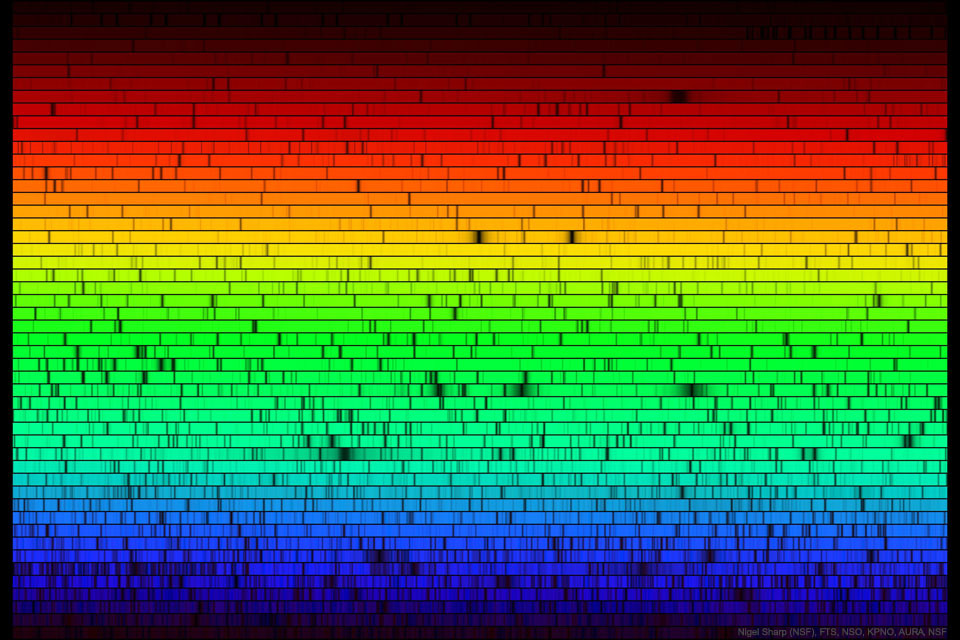
Dueling NASA Hearings On Wednesday
Hearing: Global Space Race: Ensuring the United States Remains the Leader in Space
"U.S. Sen. Ted Cruz (R-Texas), chairman of the Subcommittee on Space, Science, and Competitiveness, will convene a hearing titled "Global Space Race: Ensuring the United States Remains the Leader in Space," at 2:15 p.m. on Wednesday, September 26, 2018. Witnesses: The Honorable James Bridenstine, Administrator, National Aeronautics and Space Administration"
Hearing: 60 Years of NASA Leadership in Human Space Exploration: Past, Present, and Future
"2:00 p.m. William Gerstenmaier, HEOMD; Mark Geyer, JSC; Jody Singer, MSFC; Robert Cabana, KSC"
Keith's note: The Senate hearing with Cruz and Bridenstine should be much more interesting given their previous interactions and their recent joint visit to NASA JSC. The House hearing is going to be filled with boring non-answers from NASA HQ and field center representatives reading from talking points that serve to tow the line and make no news.
from NASA Watch https://ift.tt/2xHn7qN
via IFTTT
A Prelude To A Technosignatures Discussion
Technosignatures Workshop: Looking at Searching for Life Beyond Earth, NASA
"In April 2018, new interest arose in Congress for NASA to begin supporting the scientific search for technosignatures as part of the agency's search for life. As part of that effort, the agency is hosting the NASA Technosignatures Workshop in Houston on Sept. 26-28, 2018, with the purpose of assessing the current state of the field, the most promising avenues of research in technosignatures and where investments could be made to advance the science. A major goal is to identify how NASA could best support this endeavor through partnerships with private and philanthropic organizations."
Keith's note: Something worth watching in advance of this workshop (which will be webcast). Watch this on a large screen with the sound turned up.
Scavenger from Raphael Rogers on Vimeo.
A Stunning Short Video: "Scavenger", Astrobiology.com
"In 1977 NASA launched two golden records into deep space on the Voyager I and II probes. Having left our solar system, they are the most distant human-made objects. The records carry sounds and images of our planet and human brainwaves."
from NASA Watch https://ift.tt/2IgGfjj
via IFTTT
NASA Administrator Talks Training, Future Missions with Newest Astronaut Class
September 25, 2018
from NASA https://ift.tt/2xQX1Rp
via IFTTT
NASA Extends Chandra Operations, Science Support Contract
September 25, 2018
from NASA https://ift.tt/2Q5qQoN
via IFTTT
New Airborne Campaigns to Explore Snowstorms, River Deltas, Climate
September 25, 2018
from NASA https://ift.tt/2ztp63t
via IFTTT
Our Sun: Two Wavelengths, Two Different Images

ISS Daily Summary Report – 9/24/2018
September 25, 2018 at 12:00AM
from NASA https://ift.tt/2xEMnxR
via IFTTT
2018年9月24日 星期一
Highlights of the North Autumn Sky
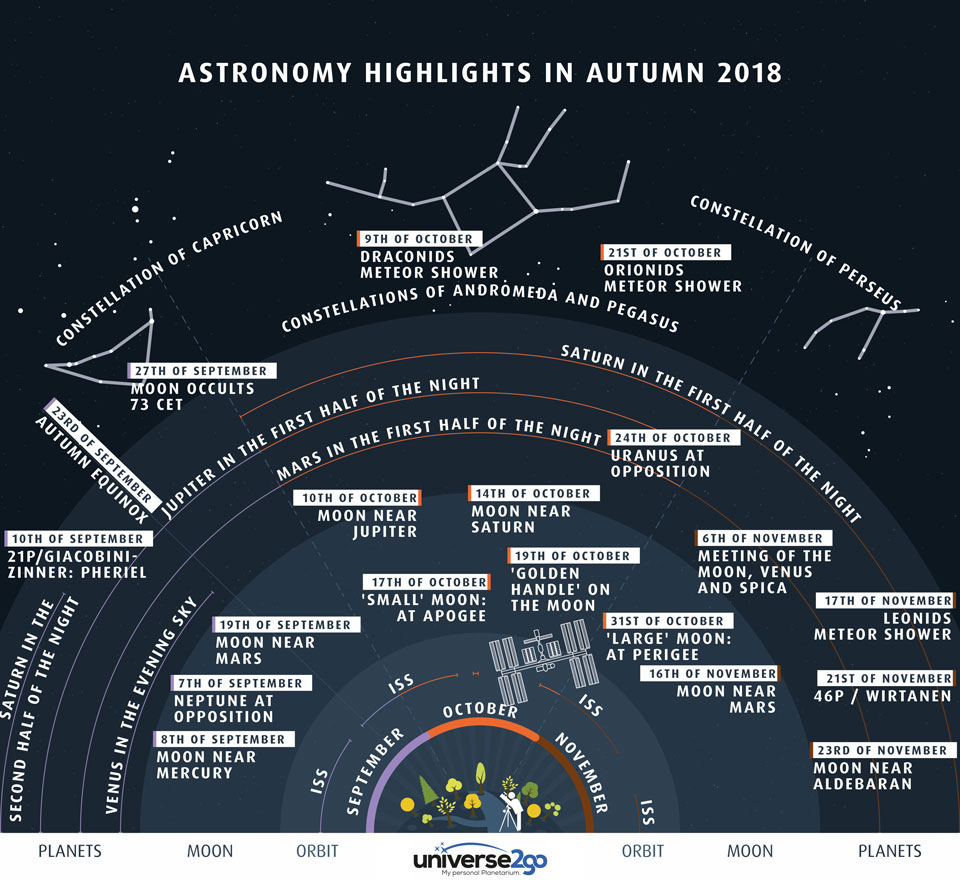
John Young Makes Last Minute Inspection of Gemini III

Limited Bridenstine Media Opportunity Today
Here's video of the event with @NASA Administrator @JimBridenstine at the @WSBRoundtable with hand-selected news media in attendance https://t.co/1J1XMBI48d Good job by @jeff_foust
— NASA Watch (@NASAWatch) September 24, 2018
from NASA Watch https://ift.tt/2I9k3aR
via IFTTT
Yet Another NASA Space Policy Report That Reveals No Policy
Keith's note: Once again NASA is trying to tell us that all is well in space and that it is moving ahead with a plan - "The National Space Exploration Campaign aims to revitalize and add direction to NASA's enduring purpose to carry out human and robotic exploration missions, expanding the frontiers of human experience and scientific discovery of the natural phenomena of Earth, other worlds, and the cosmos as a whole."
Despite the lofty words including the addition of the "cosmos" among NASA's ambitions, this plan is actually a withdrawal from earlier, more lofty exploration goals.
According to this report: "2024 - Based on results of human-class lunar lander capability demonstration missions, status of other human systems, other possible mission enhancements (e.g., retro-braking stage, launch vehicle availability) make decision on date and method of human lunar surface return and the mission objectives." In other words we still have to wait until 2024 to decide how to land Americans on the Moon a gain. But then it will take how may years before we actually do this?
All the report says is "Post-2024 Decisions - Based on the cost of lunar surface access, viability of higher-power systems and ISRU, as revealed by exploration and science missions and technology investments, and on private-sector and international demand for lunar surface access, determine the nature of a sustainable American human presence on the lunar surface and associated infrastructure development projects."
In other words it will be close to the 2030s before an American lunar lander reaches the Moon. During the Obama Administration we were going to be sending human crews to Mars (if you believed their Powerpoint slides) by the early 2030s. So now NASA is going to take almost as long only to land humans a quarter million miles away. Those are certainly lowered expectations. That sounds like negative progress - again, if you believe NASA's notional Powerpoint slides and white papers.
Meanwhile, in another potential magic act. NASA will wave more Powerpoint charts and make ISS totally commercial:
"2022 - Based on status of commercial module and/or free-flyer space station development and emerging commercial activities on ISS, fine-tune plans to end direct Federal funding of ISS by 2025 to ensure continuous access to a LEO space platform. Post-2024 Decisions - Based on the status of commercial module and/or free-flyer space station development and emerging commercial human spaceflight activities in LEO, decide on appropriate NASA and overall governmental support to ensure ongoing NASA requirements and permanent U.S. presence in LEO."
In other words NASA says that this ISS conversions to private sector operations will happen unless it doesn't happen.
from NASA Watch https://ift.tt/2IbFGrd
via IFTTT
2018年9月23日 星期日
Rover 1A Hops on Asteroid Ryugu

2018年9月22日 星期六
Equinox: Analemma over the Callanish Stones

Russia Complains About A Gateway Role It Can't Afford
Russia throws doubt on joint lunar space station with U.S.: RIA, Reuters
"Moscow may abandon a project to build a space station in lunar orbit in partnership with U.S. space agency NASA because it does not want a "second fiddle role," a Russian official said on Saturday. Russia agreed last year to work with the U.S. National Aeronautics and Space Administration (NASA) on plans for the moon-orbiting Deep Space Gateway, which will serve as a staging post for future missions. But the head of Russian space agency Roscosmos, Dmitry Rogozin, said Russia might exit the joint programme and instead propose its own lunar orbit space station project. "The Russian Federation cannot afford to play the second fiddle role in it," he was quoted as saying by the RIA news agency, without much further elaboration."
Keith's note: Russia's space program is broke, so its not surprising that they are admitting the obvious - in a way that makes it look like someone else is at fault. As for playing "second fiddle" Roscosmos simply does not have the funds to play first fiddle, so good luck with that Dmitry.
from NASA Watch https://ift.tt/2O0r7fA
via IFTTT
Hubble’s Galaxies With Knots, Bursts

2018年9月21日 星期五
Houston Medical Students to Speak Live with NASA Astronaut on Space Station
September 21, 2018
from NASA https://ift.tt/2zmy5Du
via IFTTT
ISS Daily Summary Report – 9/20/2018
September 21, 2018 at 12:00AM
from NASA https://ift.tt/2prvLoI
via IFTTT
2018年9月20日 星期四
Irregular Galaxy NGC 55
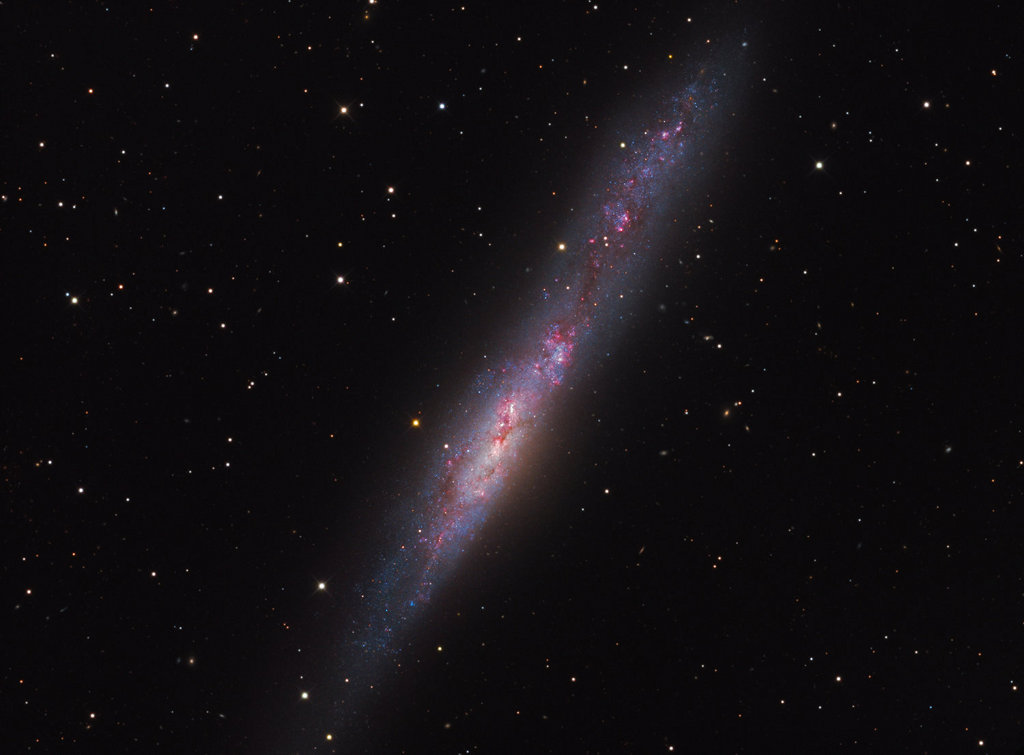
NASA Birthday Parties In DC
And the season of invitation-only #nasa60th @NASA contractor parties have started in Washington, DC. ... think of all the money that could have been spent on scholarships instead. #PartyOn pic.twitter.com/sDvmkeBIDd
— NASA Watch (@NASAWatch) September 21, 2018
from NASA Watch https://ift.tt/2PRxwXK
via IFTTT
Space Tensions Eased: Cosmonauts Love Ivanka
Ivanka Trump sent over the moon by Russian cosmonaut's message from ISS, ABC 13
"Before ending the call, NASA commander Dr. Andrew Feustel said he would be remiss if he didn't give Cosmonaut Oleg Artemyev a chance to say hello. "Ivanka, I think you very kind and nice person," Artemyev said, as the crew looked on. "When I see you on TV and the news, my mood improves and rises." Trump blushed and let out a laugh. "That's very kind of you to say! Thank you!" she responded."
from NASA Watch https://ift.tt/2DjNNmH
via IFTTT
NASA Updates Live Coverage of Japanese Cargo Launch, Delays Spacewalks
September 20, 2018
from NASA https://ift.tt/2Dj5HG7
via IFTTT
Small Satellite Demonstrates Possible Solution for 'Space Junk'

One Major Road Block To Bridenstine's Advertising Ideas
FWIW the interest by @NASA Administrator @JimBridenstine in advertising and promotion by #NASA is not going to go anywhere unless he gets Congress to change the existing law that specifically prevents NASA from doing this.
— NASA Watch (@NASAWatch) September 20, 2018
from NASA Watch https://ift.tt/2O019ZA
via IFTTT
ISS Daily Summary Report – 9/19/2018
September 20, 2018 at 12:00AM
from NASA https://ift.tt/2ppyQ95
via IFTTT
2018年9月19日 星期三
Stars and Dust in Corona Australis
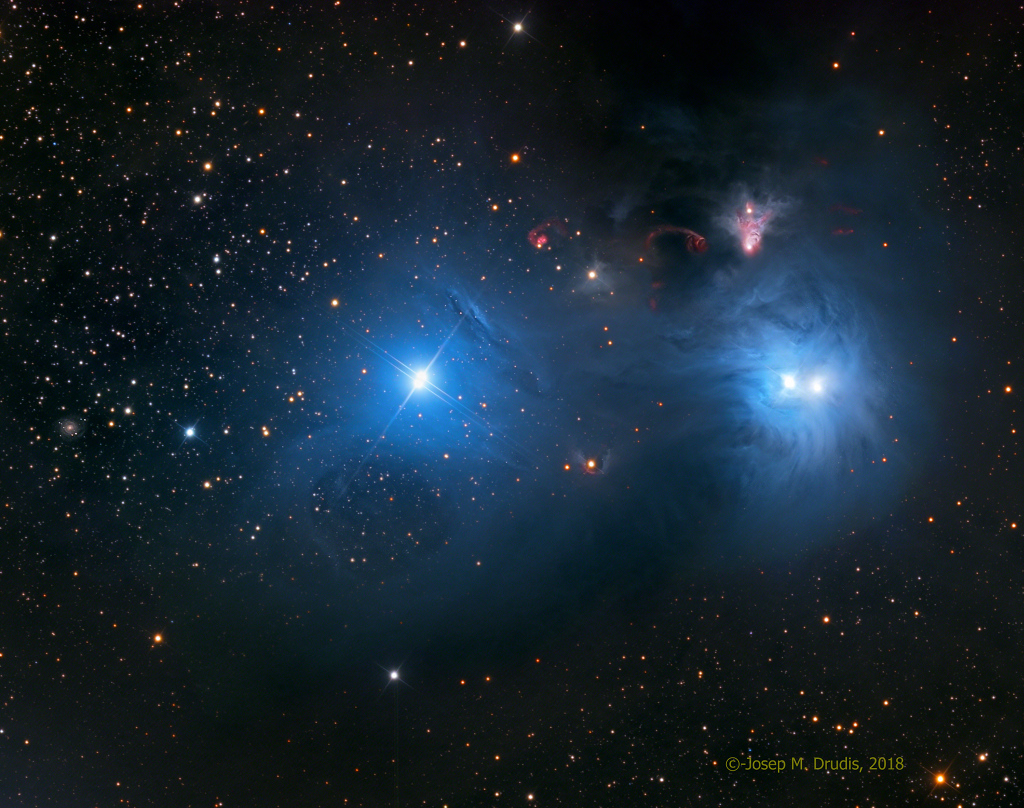
Apparently The Force Is Not With The Space Force
Shanahan downplays disagreements over Space Force structure, Defense News
"Days after the Air Force released a Space Force memo that seemed to contradict a plan laid out by Deputy Secretary of Defense Patrick Shanahan, the number two at the Pentagon downplayed any differences of opinion."
Wilson: $13 billion Space Force cost estimate is 'conservative'", Space News
"Air Force Secretary Heather Wilson said her initial $13 billion cost estimate to stand up a Space Force and sustain it for five years is likely to be revised upward as more data is crunched. In a detailed memo submitted on Friday to Deputy Defense Secretary Patrick Shanahan, Wilson provided the first glimpse into the potential cost, size and makeup of a military branch for space. The $13 billion projected cost over five years is based on a force of 13,000 people, including a headquarters of about 2,400."
New Space Force price tag fuels Capitol Hill skeptics, Military Times
"Colorado Republican Rep. Mike Coffman had already decided to lead opposition in the U.S. House to President Donald Trump's "Space Force" proposal. But a widely leaked Air Force estimate that creating a space force as a new military service would cost $13 billion over the first five years only stiffened Coffman's resolve. Coffman, who chairs the House Armed Services Committee's Military Personnel Subcommittee and sits on its Strategic Forces Subcommittee, was sure other lawmakers agree with him. "A really bad idea is a 'Department of Space,'" Coffman said in an interview Tuesday, adding, "I feel confident we can block this. The president will not have the votes."
from NASA Watch https://ift.tt/2pnLkhr
via IFTTT
Another Overtly Political Campaign Visit At JSC On Thursday
Inbox from @SenTedCruz :
— Tom Abrahams (@TomAbrahams13) September 19, 2018
Tomorrow U.S. Sen. Ted Cruz (R-Texas) will participate in a meet and greet and tour with Presidential Advisor Ivanka Trump and NASA Administrator Jim Bridenstine at the Johnson Space Center in Houston.
Ivanka Trump touring NASA's Johnson Space Center on Thursday, Houston Chronicle
"Ivanka Trump will be in Houston on Thursday for a tour of NASA's Johnson Space Center. President Donald Trump's daughter will be accompanied by NASA Administrator Jim Bridenstine."
Ivanka Trump to visit Mesquite on Friday to see how Walmart trains workers for today's economy, Dallas Morning News
"Ivanka Trump isn't the only member of the Trump family who'll be in Texas in the coming weeks. Texas State Rep. James Frank announced on his Facebook page that Sen. Ted Cruz and Donald Trump Jr. would be in Wichita Falls for a rally on Oct. 3. And the president announced on Aug. 31 he would be coming to Texas in October to hold a "major rally" for Cruz."
Keith's note: That's three visits to JSC in Texas in a matter of a few months for Jim Bridenstine. All other NASA centers have had only one visit. Just sayin'. Also, FWIW Ted Cruz has a political rally shortly after his JSC
campaign appearance with Ivanka tour just down the street at Franca's Real Italian Restaurant at 1101 East NASA Parkway on Thursday night (that's nice and close to JSC). Let's see who else shows up.
- VP Pence Visits Texas For A Fund Raiser And A JSC Visit, earlier post (23 August 2018)
from NASA Watch https://ift.tt/2DeBxDW
via IFTTT
NASA Updates Preview Briefing for International Space Station Spacewalks, Live Coverage
September 19, 2018
from NASA https://ift.tt/2ODh5Og
via IFTTT
First Light Data for NASA's Parker Solar Probe

That Time A Falcon Rocket Visited Washington, DC
15 yrs ago, @elonmusk brought his un-flown falcon rocket to the @airandspace museum to show the world he was ready to take on the traditional aerospace firms. This week - he and @yousuck2020 announce their mission to the moon. #dearMoon Photos: @spaceref @KeithCowing pic.twitter.com/pQVFdQE9fC
— TJ Cooney 🚀 (@TJ_Cooney) September 19, 2018
SpaceX Falcon Launch Vehicle Unveiled in Washington D.C., earlier post (2003)
"Among the speakers at the rocket's unveiling were Elon Musk, President and CEO of SpaceX and Patti Grace Smith, Associate Administrator for Commercial Space Transportation, FAA. Musk and Smith were introduced by Keith Cowing, editor of NASA Watch.com."
Keith's note: How time flies. I must say that thhis was a really interesting event. I was also one of the people standing at the podium to introduce Patti and Elon referring to the Falcon 1 as "not your father's rocket". The idea for this, as best as I can recall, emerged from a discussion that my late friend and co-author Frank Sietzen and I had. At that time Frank was SpaceX's first employee in Washington, DC. I think I said something to the effect of "why not bring the rocket to DC and just park it in front of NASA Headquarters?" Frank said I was crazy and then admitted that Elon was a little crazy too. He suggested it to Elon. Then it happened - again, as best I recall.
FYI one of the buildings in the picture is the old NASA HQ. Maybe I should Photoshop a Falcon 9 in front of the current NASA HQ ...
from NASA Watch https://ift.tt/2NUUtMh
via IFTTT
ISS Daily Summary Report – 9/18/2018
September 19, 2018 at 12:00AM
from NASA https://ift.tt/2piSl2V
via IFTTT
2018年9月18日 星期二
Cocoon Nebula Deep Field
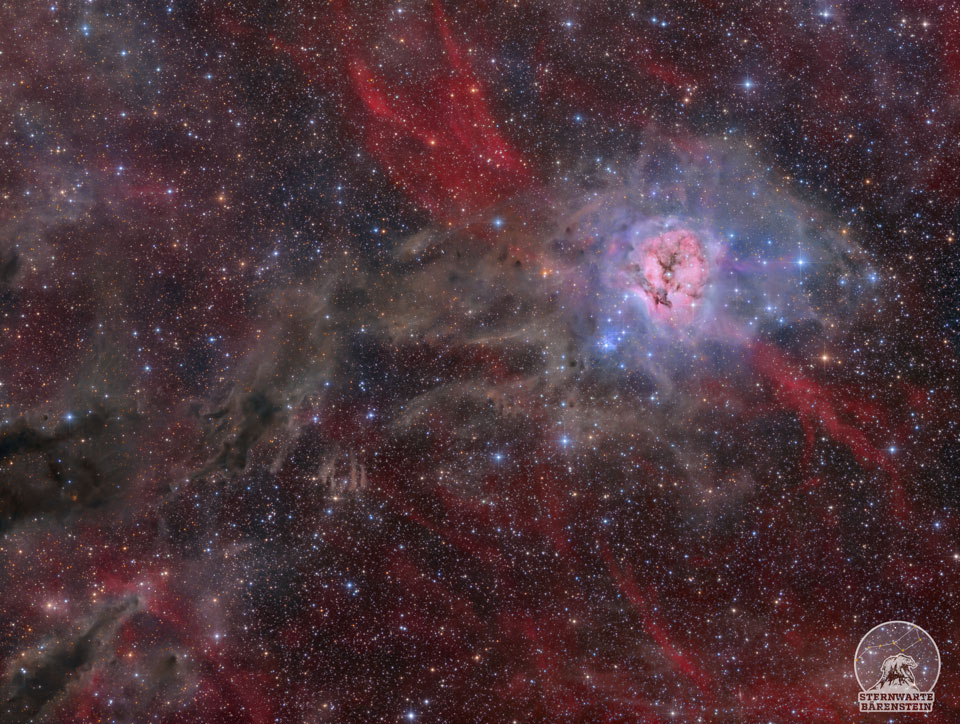
Which Future In Space Do You Want To See?
IMHO We can either try and create a future where people - many people - live and work in space - or we can settle for 6 civil servants in flight suits doing interviews about things that no one understands.
— NASA Watch (@NASAWatch) September 18, 2018
Let's give #dearMoon @dearmoonproject a chance. pic.twitter.com/qKVohz9ssR
from NASA Watch https://ift.tt/2xhI5fG
via IFTTT
Astronaut Serena Auñón-Chancellor Examines Her Eyes

ISS Daily Summary Report – 9/17/2018
September 18, 2018 at 12:00AM
from NASA https://ift.tt/2Qzu9G1
via IFTTT
2018年9月17日 星期一
Salt Pepper and Ice

A Very Different Take On Experiencing Space Travel
The Next Expedition To The Moon Will Be Filled With Artists
"SpaceX exceeded everyone's expectations tonight by announcing that Japanese billionaire Yusaku Maezawa bought not just one but all of the seats in a BFR mission to fly by the Moon. Stating "I have chosen to go to the Moon" Maezawa, who made his money in the entertainment business, explained that he had been fascinated by the Moon since he was a kid. Maezawa said that he did not want to go alone. So, in Elvis Presley fashion, he bought out the venue and is going to invite a number of artists to go along on the Moon trip with him."
from NASA Watch https://ift.tt/2NPpXDr
via IFTTT
NASA Hosts Science Chat on Upcoming Historic Planetary Encounter
September 17, 2018
from NASA https://ift.tt/2Qy1eSy
via IFTTT
NASA Names Holly Ridings New Chief Flight Director
September 17, 2018
from NASA https://ift.tt/2D6Eyq1
via IFTTT
National Space Council UAG Goes Through The Motions Of Being Interested
Keith's note: Once again we see an exercise in checking the boxes with regard to the making of space policy. A White House-created committee of experts, hand-selected to focus on a desired ad somewhat pre-determiined outcome, goes through the motions of being interested in what people have to say. They only go to friendly locations where dissent or differences in opinion are unlikely - and consensus can be proclaimed by default. They never talk to anyone from the remaining 99.9999% of American electorate who ultimately pays for all of the shiny space toys.
Then, at their next meeting, they can show a Powerpoint chart with a group that they have reached out to with a check next to it. In this case the Users Advisory Group is almost entirely composed of either political favorites or representatives of large aerospace companies looking for more contracts from NASA and DOD. There are no real "users" of space on this panel. Nor are there any members from the next generation who will inherit and conduct America's space activities. All we see are sellers. Yet another choir practice session amongst the usual suspects in an echo chamber.
In this case (see the AIAA photos below) the room is nearly empty and there is no webcast. The echo must be particularly evident this time - but there is no one there to (other than Jeff Foust) to notice.
|
|
|
|
from NASA Watch https://ift.tt/2D1xUkN
via IFTTT
U.S. - Canada Space Cooperation Remains Strong

Canada and U.S. Space Cooperation Remains Strong but Funding Drives Programs, SpaceQ
"On September 7 the Wilson Center's Canada Institute in Washington organized a one day event titled "Over the Horizon: A New Era for Canada-U.S. Space Cooperation?" As with many events like this, discussions behind the scenes is where a lot of the action was. Though, there was one clear fact that no one could surmount."
from NASA Watch https://ift.tt/2xpGV0U
via IFTTT
ICESat-2 Lifts Off to Study Earth's Changing Ice

2018年9月16日 星期日
Cosmic Collision Forges Galactic Ring

2018年9月15日 星期六
A Solar Filament Erupts
